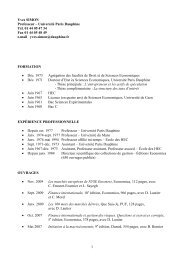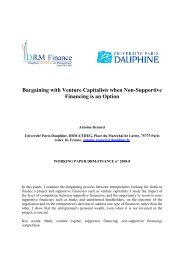Corporate governance and earnings management ... - CEREG
Corporate governance and earnings management ... - CEREG
Corporate governance and earnings management ... - CEREG
Create successful ePaper yourself
Turn your PDF publications into a flip-book with our unique Google optimized e-Paper software.
This philosophy was also reflected in the first US regulations. In 1917, a memor<strong>and</strong>um<br />
entitled “Uniform Accounting” issued by the American Institute of Accountants (predecessor<br />
to the American Institute of Certified Public Accountants) was accepted by the Federal Trade<br />
Commission <strong>and</strong> Federal Reserve Board, for application by companies wishing to obtain a<br />
loan. It recommends that goodwill should be “shown as a deduction from net worth” (AIA,<br />
1917). While this treatment was only compulsory for financial statements produced for the<br />
purposes of a loan, it still reveals the state of mind at the time (see below).<br />
But the st<strong>and</strong>ard (pure) static approach had not lost all its influence: there were still authors,<br />
<strong>and</strong> not just minor ones, who preferred rapid amortization of goodwill <strong>and</strong> in fact most<br />
intangibles. One of them was Hatfield, whose position remained unchanged (1927). Others<br />
were in favor of recognition at cost with no systematic amortization (Dickinson, 1917, pp. 79-<br />
80; Freeman, 1921, p. 263; Bliss, 1924, p. 350; Esquerré, 1927, p. 130). This view had<br />
considerable support from the tax administration through the 1918 Revenue Act, which did<br />
not include goodwill in its list of intangible items for which a systematic allowance for<br />
obsolescence is possible, <strong>and</strong> the Revenue Act of 1928 which stipulated that “no deduction<br />
for depreciation, including obsolescence, is allowable in respect of goodwill” (Catlett &<br />
Olson, 1968, p. 57).<br />
There was an increasing trend recommending recording goodwill at cost, followed by<br />
systematic amortization over the useful life or a period corresponding to the period on which<br />
discounting to present value was based. Heading the line in this school were Gilman (1916, p.<br />
195), Paton <strong>and</strong> Stevenson (1922, p. 531), Yang (1927, p. 196) <strong>and</strong> Paton <strong>and</strong> Littleton (1940,<br />
p. 92).<br />
Under this flood of contradictory opinions, it may seem tempting to conclude like Saliers<br />
(1923, p. 580) that all opinions are equal. But some opinions appeared more widespread than<br />
others. It is undeniable that supporters of speedy amortization soon found themselves in the<br />
minority, <strong>and</strong> their views were not taken up by the emerging regulations.<br />
30



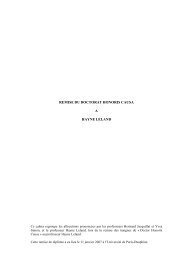

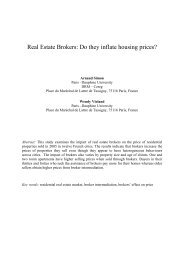
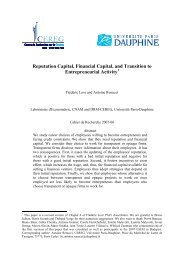

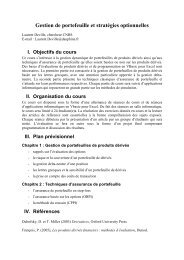



![& 6 ] ^ F ]^ - CEREG - Université Paris-Dauphine](https://img.yumpu.com/33326502/1/184x260/-6-f-cereg-universitac-paris-dauphine.jpg?quality=85)

